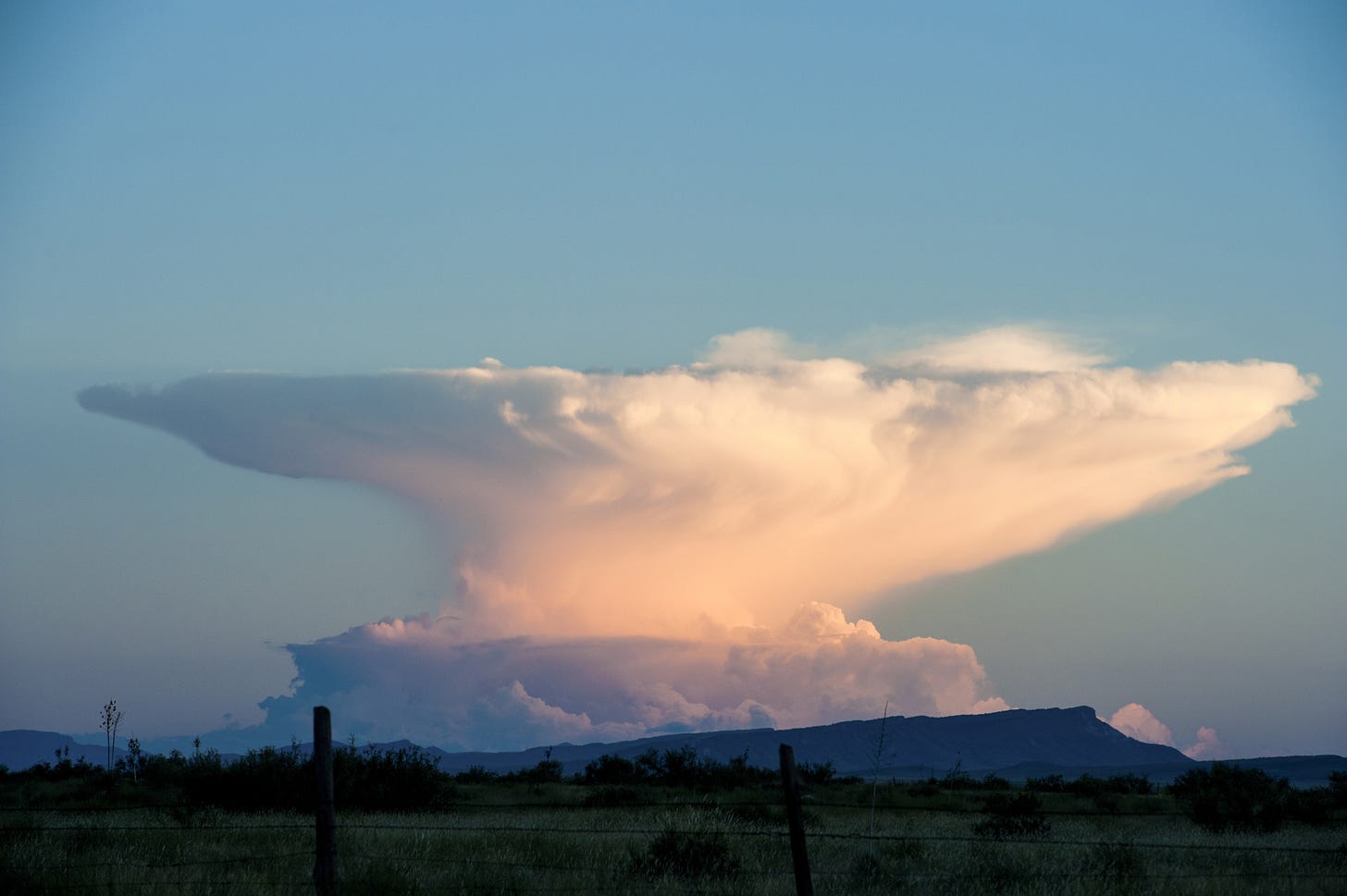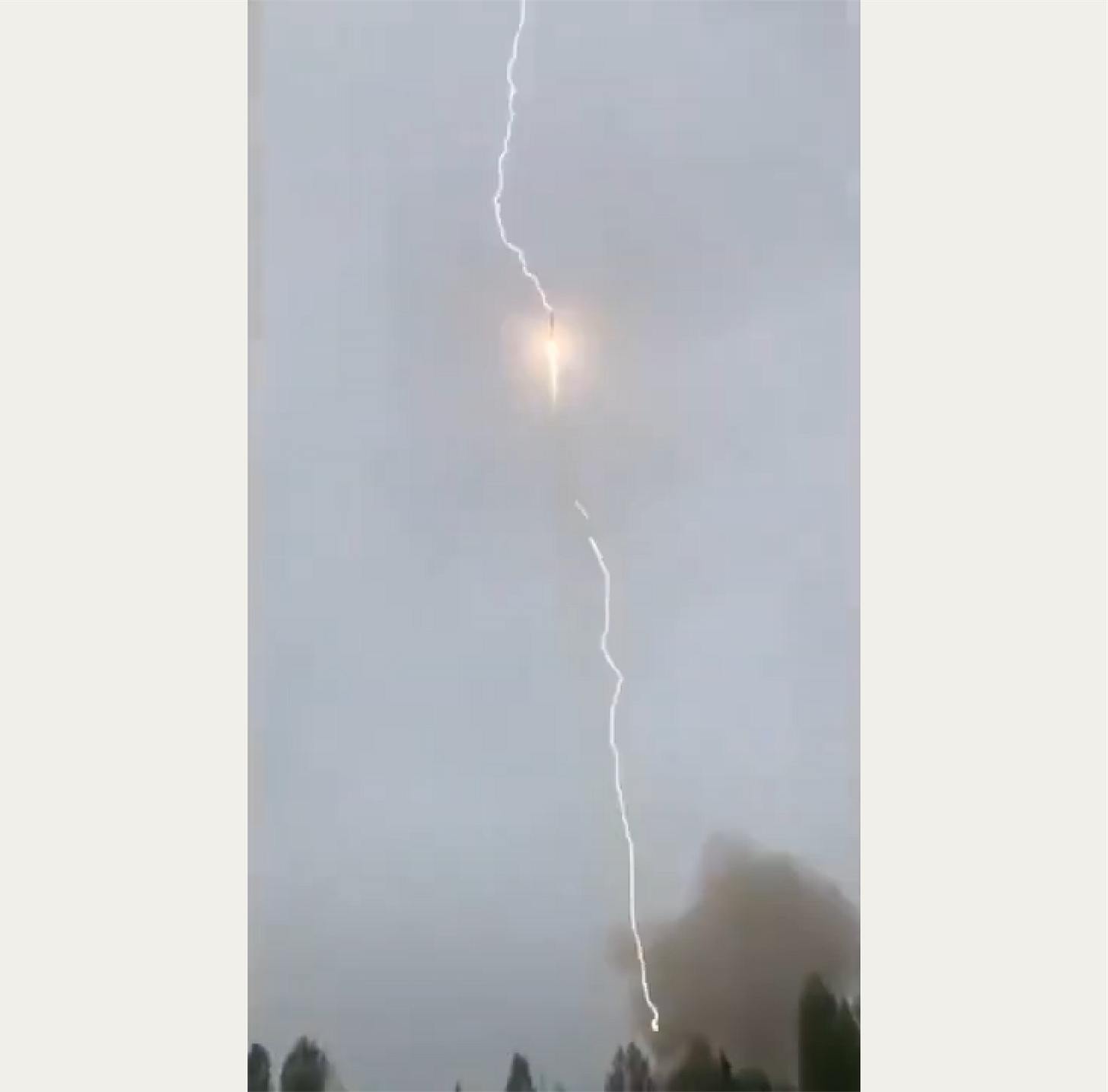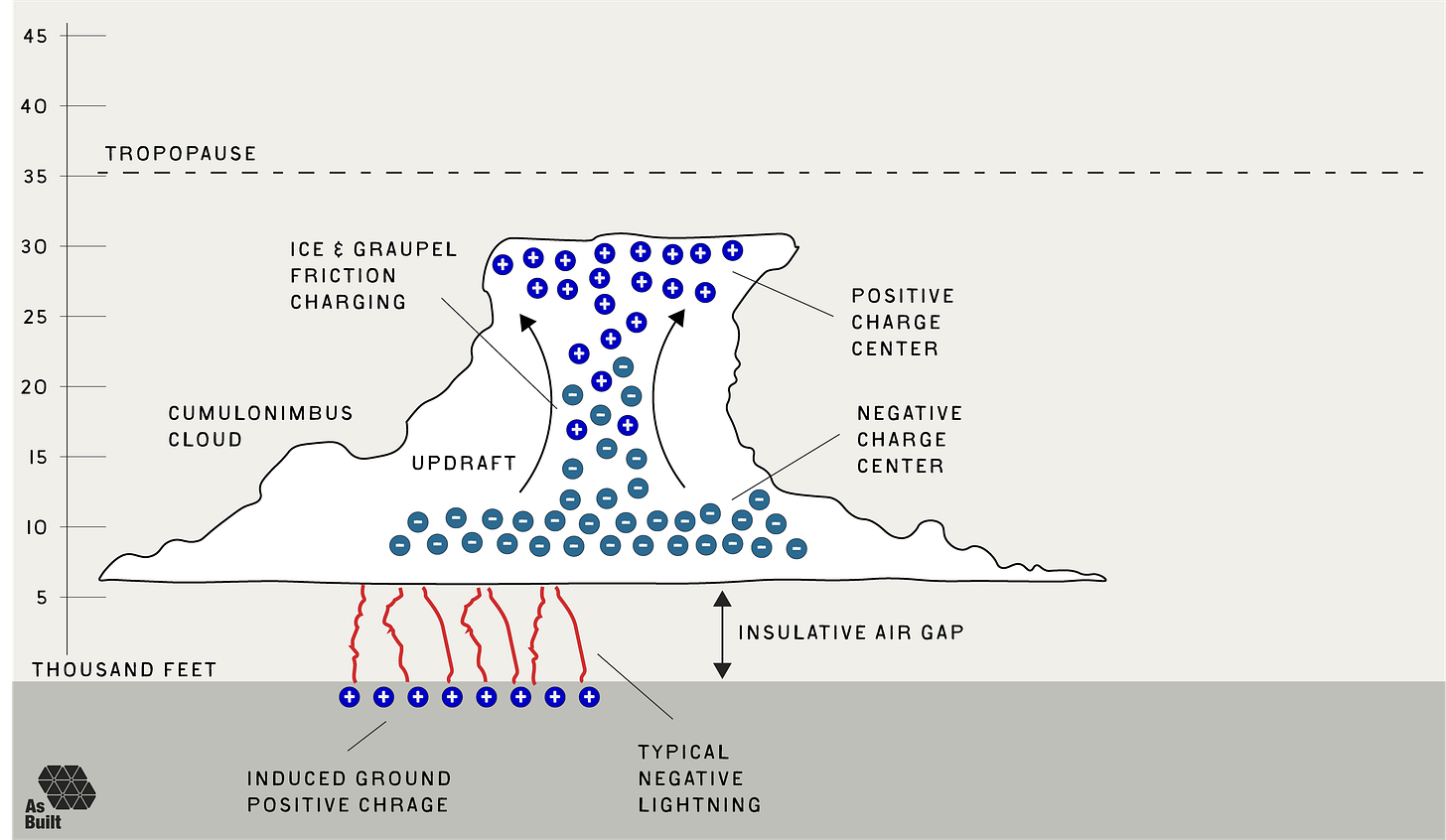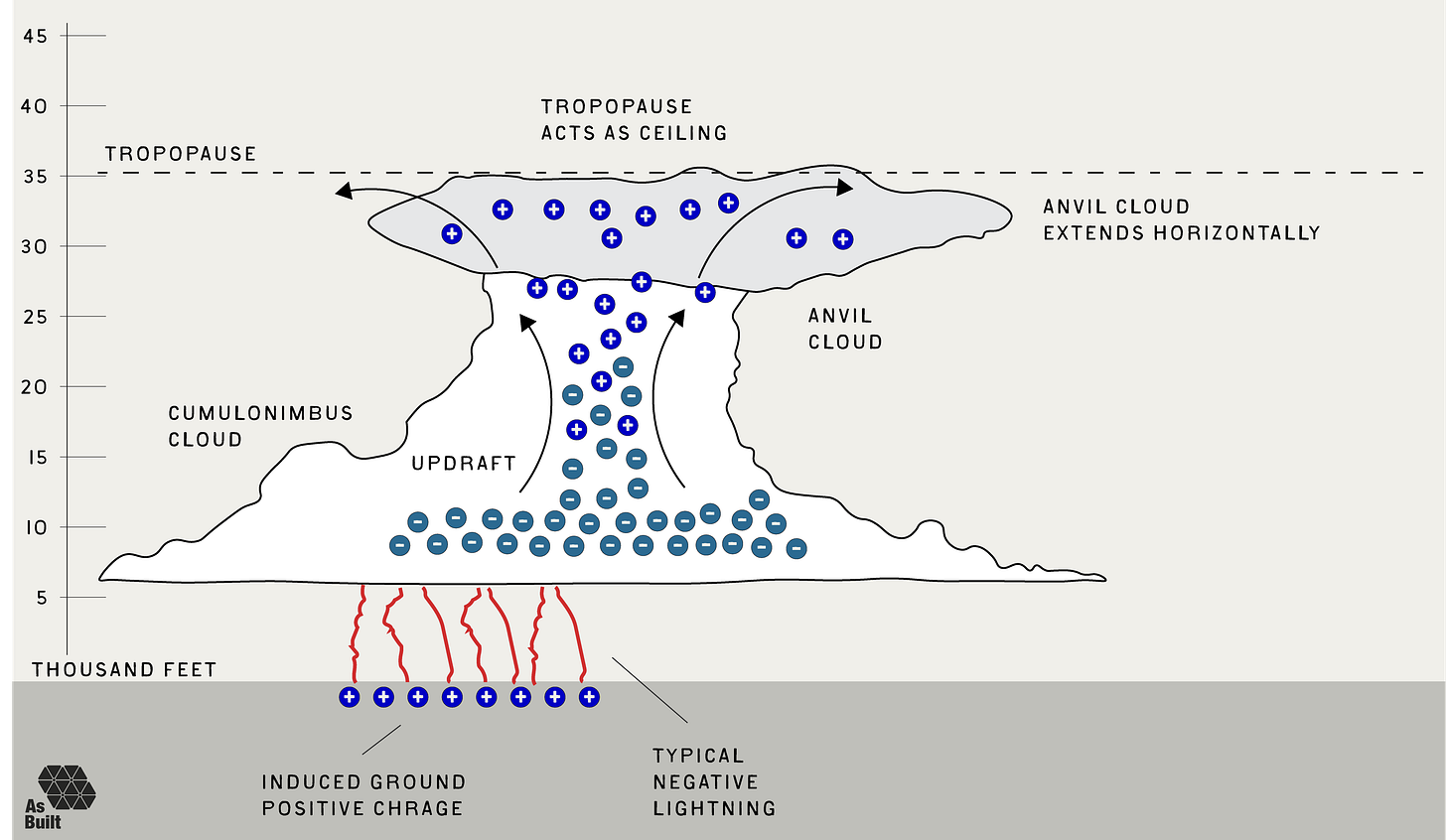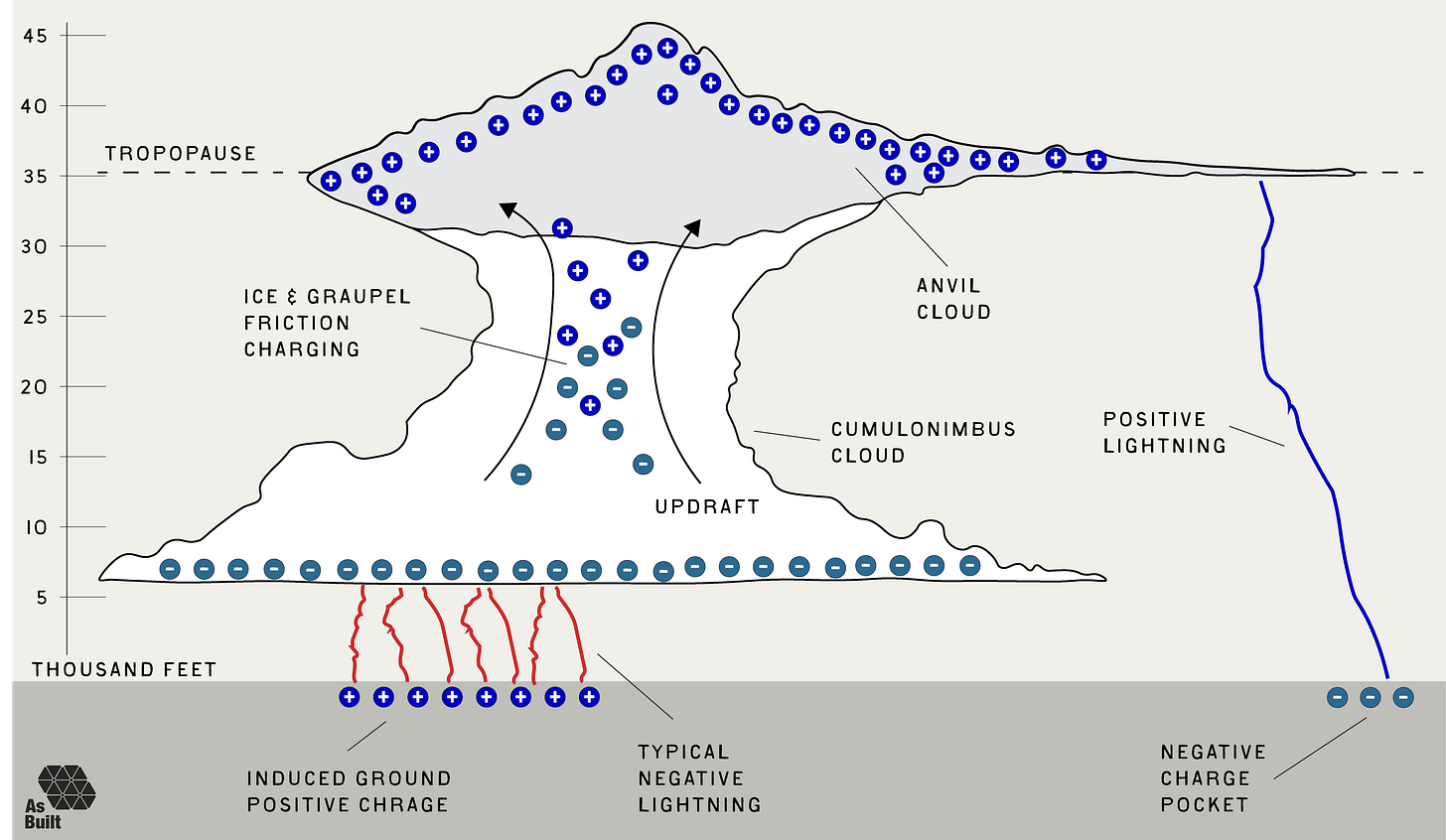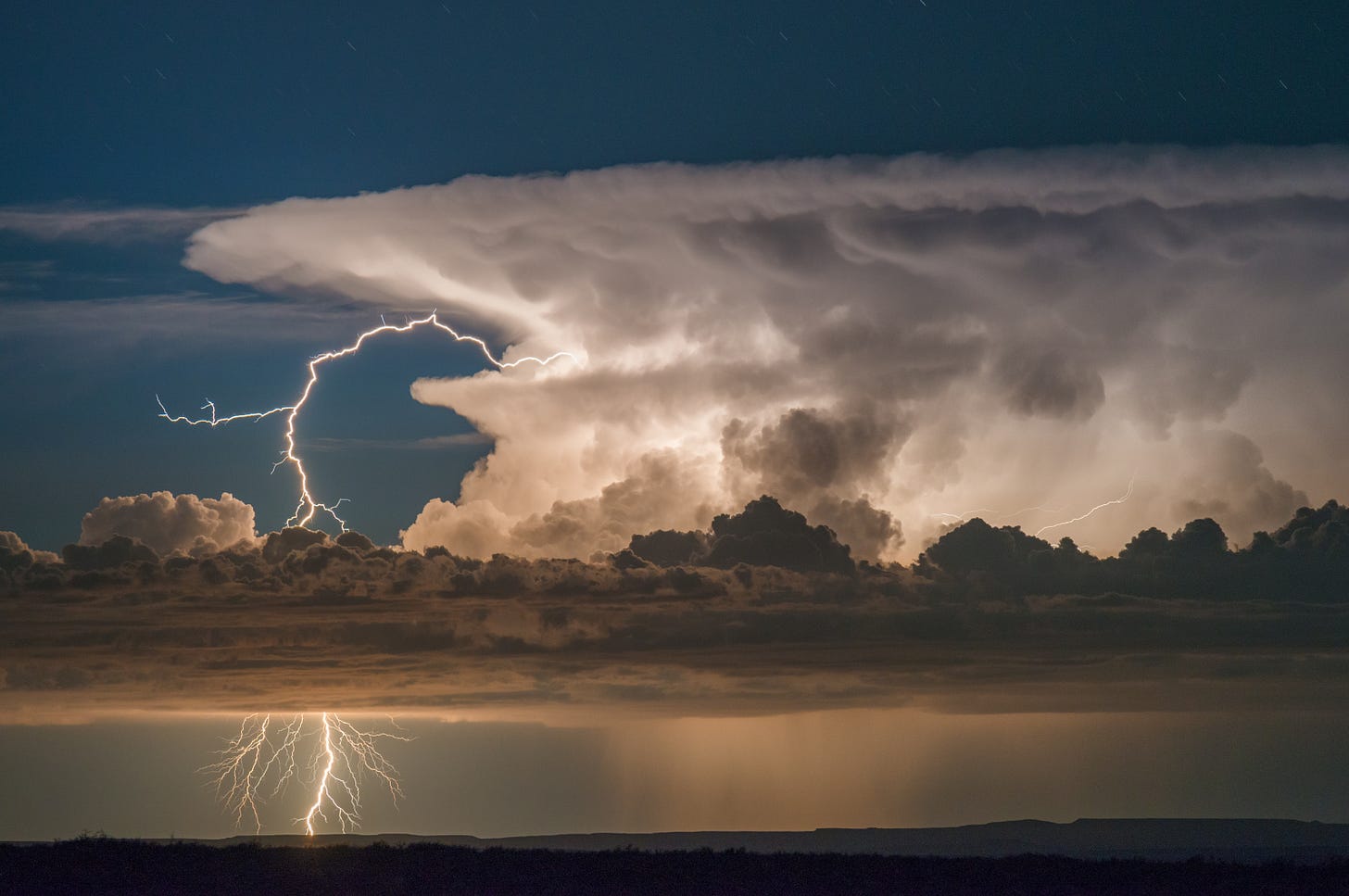A few days ago, SpaceX scrubbed a Starship launch. The culprit wasn't engine trouble or a technical malfunction. It was a violation of the anvil cloud rule. To most observers, the Texas sky looked clear enough for flight. But somewhere nearby, a flat-topped anvil cloud lurked.
These far-reaching cloud structures can deliver devastating lightning blows from miles away, threatening vehicles in flight. Understanding the invisible risks presented by these weather features contextualizes why some launches go and others scrub — even on clear sunny days.
Why lightning matters
First, why do lightning strikes matter? When lightning hits a vehicle in flight — such as a rocket or an airplane — it delivers a significant charge. Ideally, the vehicle's skin and structure act as a Faraday cage, keeping the electrical charge on the exterior. And for this reason, flight vehicles often use conductive paint and take care to ground all components.
If electrical bonds are poor or the magnitude of the charge is simply high enough to overcome the protections, damage can occur. Gaps in bonding can become arc paths, which pose an ignition risk if they’re near fuel tanks. Additionally, electronics can be upset, impacting the mission.
Aviation lightning strikes are relatively common. A commercial aircraft is typically struck about once every 3000 flight hours, or about twice a year. These vehicles are highly engineered to direct the current to specific exit points on the aircraft and down to the ground.
Launch vehicle strikes are less frequent, largely because operators go to great lengths to avoid them after a string of notorious accidents. In 1969, Apollo 12 was famously struck by lightning, temporarily knocking out power and threatening what would become the second moon landing mission.
Later, in 1987, a lightning strike on the Atlas Centaur 67 mission disabled the control system, resulting in the complete loss of the mission — one of the worst possible outcomes.
In 2019, a Soyuz vehicle was struck on ascent. It continued with its mission, but provided some of the most stunning imagery of a launch vehicle lightning strike.
Most of the strikes discussed above came from "triggered lightning," which is a separate phenomenon where a plane or rocket induces lightning. However, they're illustrative of the impact any lightning can have on a vehicle in flight. As a result, mission planners take significant precautions to avoid all types of lightning, some of which can originate from anvil clouds.
How clouds get charged
We often take for granted that electrical strikes can come from clouds. However, it's helpful to examine how exactly they become charged in the first place.
Clouds start with transparent water vapor in the air. As relative humidity approaches 100%, water vapor condenses and droplets form around tiny dust or aerosol particles, called cloud condensation nuclei. These water droplets are opaque and create clouds.
As temperatures drop below freezing, some water droplets freeze. However, temperature alone isn't enough to turn water to ice. Similar to droplet formation, ice also requires an ice nuclei particle to seed and initiate growth. These are not as common, which means not every water droplet will turn into an ice crystal. Instead, as temperatures drop, some water droplets become supercooled and can be as cold as -40°F while still in liquid form.
When the supercooled water droplets touch the surface of an ice crystal, they will freeze to it and expand in size. This creates soft hail balls, known as graupel.
At this point, we have three types of moisture floating around in the clouds:
Small ice crystals
Supercooled water droplets
Soft hail known as graupel
Winds are constantly blowing these components around in the cloud, causing them to bump into each other. When ice crystals and graupel collide, they build an electrical charge via friction. At temperatures below approximately 5°F, the ice crystals become positively charged, while the graupel acquires a negative charge.
Usually, in cumulonimbus clouds, there is a strong updraft in the central part of the cloud base, driving air upward. The small ice crystals (positively charged) get caught in this updraft and are carried upwards. The larger and denser graupel (negatively charged) tends to fall or stay suspended in place.
As a result, the cloud begins to take on a charge structure. The upper portion is positively charged, and the central lower region is negatively charged. This dipole charge structure is the simplest way to understand cloud electrification. However, in reality, the charging process can be more complex, sometimes with other small portions of the cloud also acquiring a positive charge.
Lightning strikes
The ground beneath a storm is induced to be positive by the cloud's negative charge center. The air gap between the cloud and the Earth serves as an electrical insulator, allowing a significant charge to accumulate.
If the potential exceeds the insulating capacity of the air, a lightning strike happens. Usually, the threshold is about 3,000,000 Volts/meter. When a strike does occur, it's known as a "negative strike," given that the lightning originated in negatively charged clouds.
This is your everyday lightning variety that accompanies thunderstorms. Rockets typically won't launch with an active lightning storm like this overhead.
How anvils take shape
But the launch scrub of interest occurred with a clear blue sky. Few clouds were in sight, except for a large anvil formation. To understand its threat, let's first figure out what it is.
In the center of a thunderstorm, the warm updraft continues to carry positively charged ice crystals upward, higher and higher. The trend continues until the updraft reaches the tropopause, a layer of air located just above the troposphere. At Texas latitudes, this threshold presents at 35,000 to 40,000 feet. At this point, air temperature stops decreasing with altitude, which causes the tropopause to act as a ceiling.
As a result, a small portion of the cloud will rise vertically above the tropopause, but most of the cloud structure will begin spreading out horizontally. Positively charged clouds spread out expansively and can reach 50 to 100 miles from the original thunderstorm.
Anvils can persist long after their parent storm has weakened, drifting for one to three hours in strong upper winds. Even as the storm below fades, the anvil remains highly charged and capable of producing dangerous lightning.
Anvil lightning strikes
Anvil lightning is a special variety. Recall, the tops of the clouds are positively charged, so this is positive lightning. While much of the ground is induced positive, pockets of negative charge do exist. This lightning finds and strikes them with intensity.
While it only accounts for 5-10% of all strikes, positive lightning tends to be more potent than traditional negative lightning. It exists higher in the atmosphere, which means more charge can accumulate. These strikes are known to travel up to 30 miles away from the cloud and transmit two to ten times more energy than common negative lightning.
This means that not only can an anvil cloud float far away from its parent thunderstorm, it can also strike far away from itself. As a result, if anvil clouds are present, even at a distance, caution is exercised with launch operations.
Some anvil lightning comes downward from the cloud to strike its target. However, other lightning extends out the side of the cloud structure horizontally, before turning down to the Earth. From the ground, this can make it look like the lightning is coming out of a clear blue sky, and these strikes are often referred to as "bolts from the blue."
The anvil rule
Since anvil clouds can strike both far and with fury, they pose a pronounced hazard to launch vehicles. To manage this risk. NASA, the FAA, and launch vehicle operators establish strict rules that dictate when launches can and can't proceed.
These are known as Launch Commit Criteria (LCC), and are constantly evaluated throughout the countdown to determine GO/NO-GO for launch. For anvil clouds, the weather LCCs typically take into account:
If the anvil cloud is attached or detached from a thunderstorm, and the time since detachment
Distance to the anvil cloud
Time since last lightning discharge
The exact distances and thresholds vary by launch operator, location, and mission type. In some cases, more detailed considerations are made for temperature and time-associated distance. However, the overarching goal is to keep the rocket grounded if an anvil could strike it in flight.
And for that reason, sometimes launches scrub under clear blue skies.
General References
NASA. Falcon 9 Crew Dragon Launch Weather Criteria Fact Sheet. July 2021. https://www.nasa.gov/wp-content/uploads/2021/07/falcon9_crewdragon_launch_weather_criteria_fact_sheet.pdf
NASA. NASA Technical Standard: Lightning Protection Requirements for Space Launch Vehicles, NASA-STD-4010. Baseline Edition. https://standards.nasa.gov/sites/default/files/standards/NASA/Baseline/0/nasa-std-4010.pdf
Federal Aviation Administration. Launch Safety: Lightning Criteria for Expendable Launch Vehicles. Federal Register 76, no. 110 (June 8, 2011). https://www.federalregister.gov/documents/2011/06/08/2011-14146/launch-safety-lightning-criteria-for-expendable-launch-vehicles
National Weather Service. “Lightning Science: How Thunderstorms Electrify and Cause Lightning." NOAA Weather-Ready Nation. https://www.weather.gov/safety/lightning-science-electrification
National Severe Storms Laboratory. “Lightning Frequently Asked Questions." NOAA NSSL Education. https://www.nssl.noaa.gov/education/svrwx101/lightning/faq/
National Oceanic and Atmospheric Administration. “The Positive and Negative Side of Lightning." NOAA JetStream. https://www.noaa.gov/jetstream/lightning/positive-and-negative-side-of-lightning
University of Arizona Department of Atmospheric Sciences. "Cloud Electrification and Lightning." ATMO 589 Lecture Notes, February 16, 2015. http://www.atmo.arizona.edu/students/courselinks/spring15/atmo589/lecture_notes/feb16_2015.html.
ZT Research. "Electrification of Clouds." ZT Research Blog (blog). Accessed August 27, 2025. https://ztresearch.blog/education/electrification-of-clouds/.
"Lightning Strike on Emirates A380 During Flight Caught on Video," The National, May 10, 2016, accessed August 26, 2025, https://www.thenationalnews.com/uae/transport/lightning-strike-on-emirates-a380-during-flight-caught-on-video-1.370276/.
"Lightning Strikes Airplane in Flight," YouTube video, accessed August 26, 2025, https://www.youtube.com/watch?v=-jQVsI7erv8.



